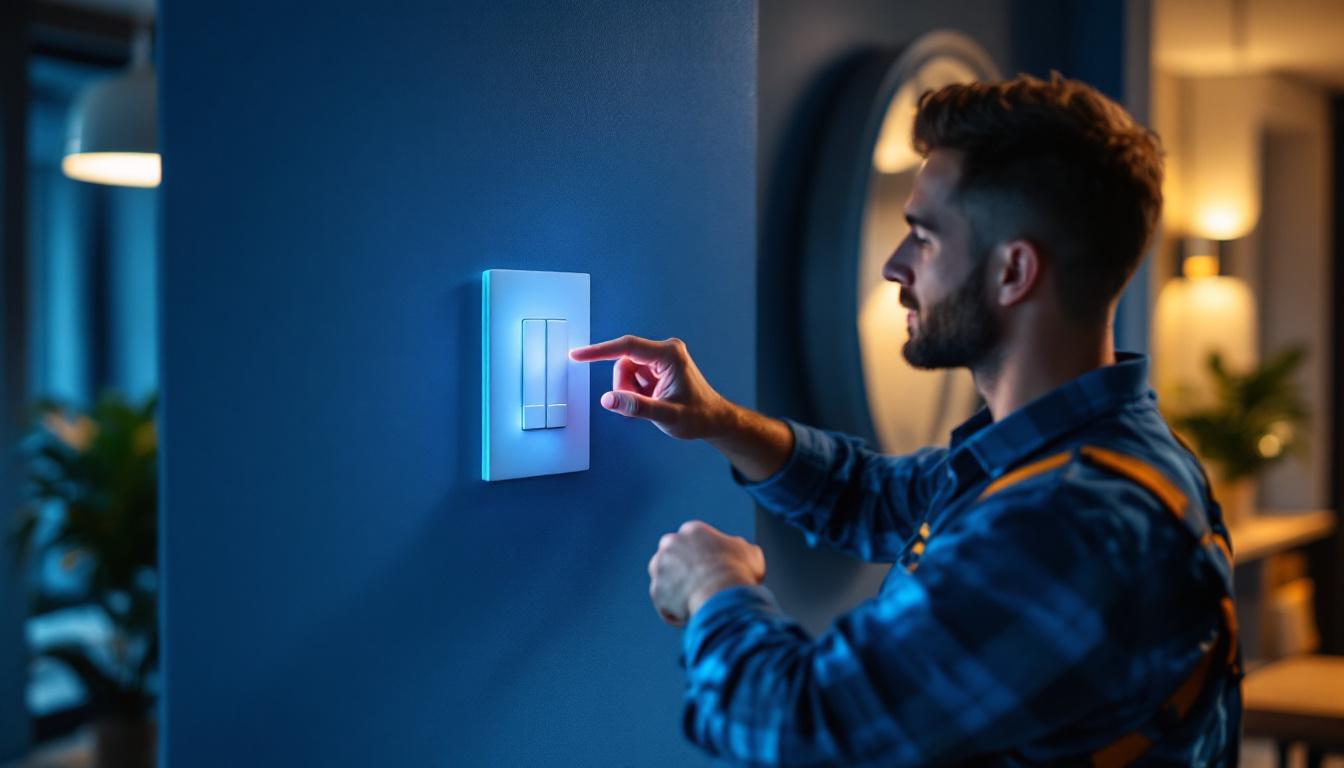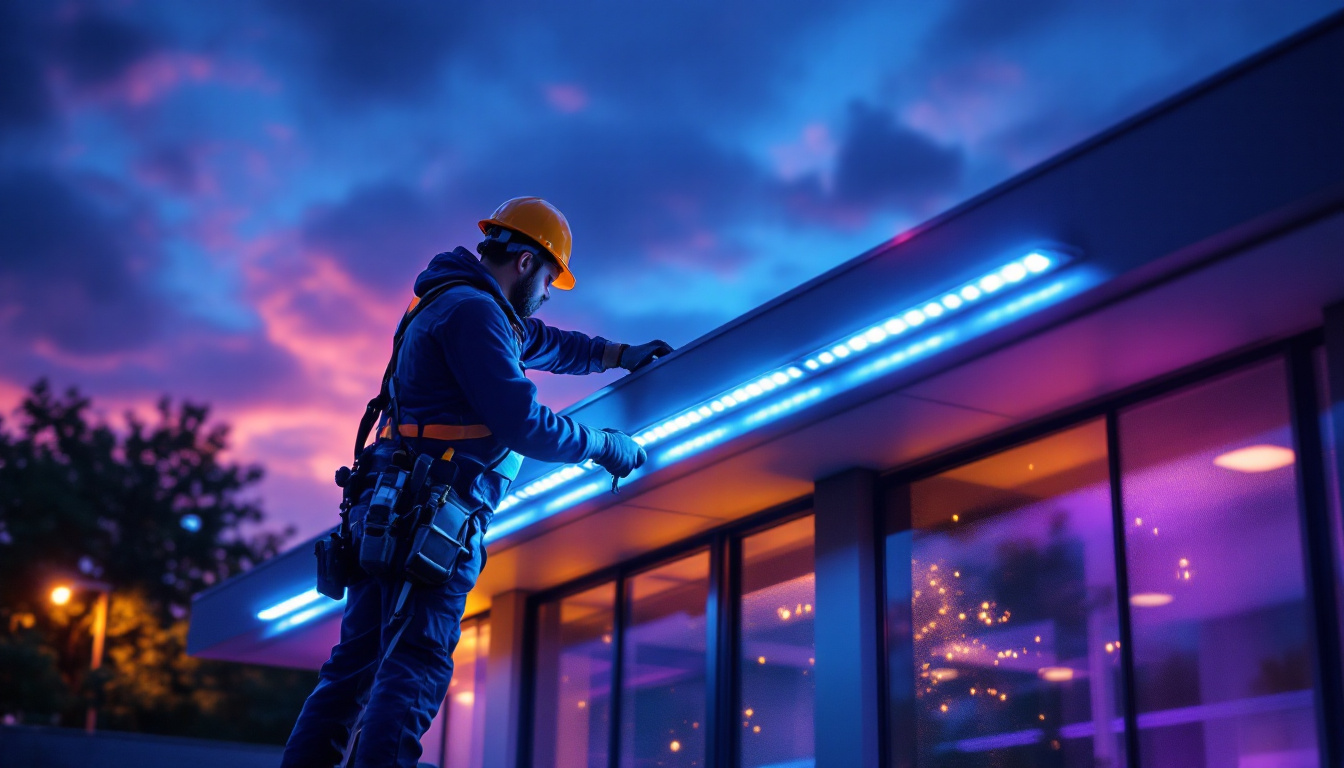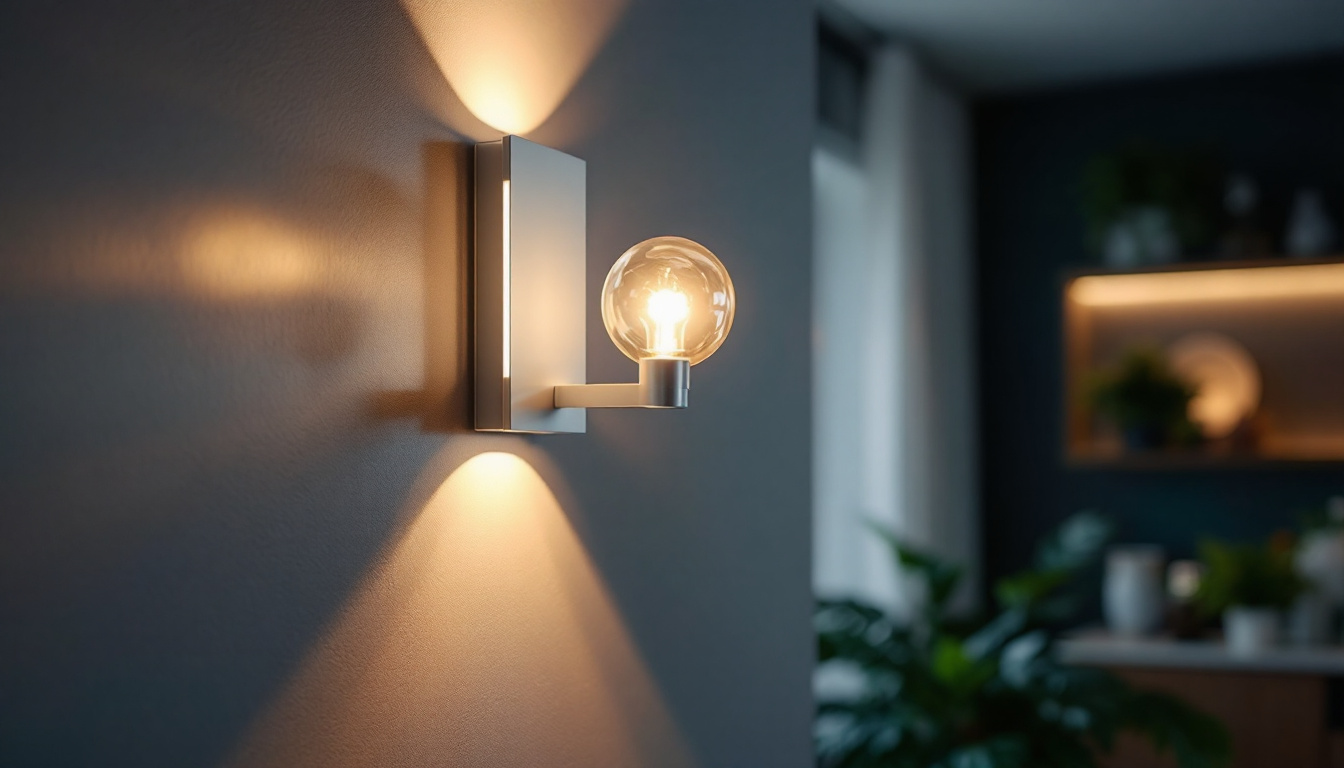
In an era where smart technology is rapidly transforming the way we live and work, lighting contractors are presented with a unique opportunity to enhance their service offerings. The integration of Wi-Fi switches into lighting systems not only improves functionality but also elevates the overall customer experience. Understanding how to effectively implement and master these devices can set a contractor apart in a competitive market.
Wi-Fi switches are devices that allow users to control their lighting remotely through a smartphone, tablet, or voice-activated assistant. Unlike traditional switches, these smart devices connect to the home’s Wi-Fi network, enabling users to manage their lighting from virtually anywhere. This technology is not just a convenience; it also plays a significant role in energy efficiency and home automation.
At the core of Wi-Fi switches is a simple concept: connectivity. These switches communicate with a home’s Wi-Fi network to relay commands from a user’s device. When a user taps a button on their smartphone app, the command is sent to the Wi-Fi switch, which then activates or deactivates the connected light fixture. This seamless interaction is what makes Wi-Fi switches appealing to tech-savvy homeowners.
Most Wi-Fi switches are compatible with various types of lighting, including LED, incandescent, and fluorescent bulbs. This flexibility allows lighting contractors to offer a wide range of solutions tailored to their clients’ needs. Additionally, many models support integration with other smart home devices, creating a cohesive ecosystem that enhances user experience. For instance, a Wi-Fi switch can be programmed to work in conjunction with smart thermostats, allowing users to adjust lighting and temperature simultaneously for optimal comfort and energy savings.
The advantages of incorporating Wi-Fi switches into lighting projects are numerous. First and foremost, they offer unparalleled convenience. Homeowners can control their lighting from anywhere, whether they are at home or away. This feature is particularly attractive for those who travel frequently or want to enhance their home security by simulating occupancy. For example, users can set their lights to turn on and off at specific times, giving the illusion that someone is home, which can deter potential intruders.
Moreover, Wi-Fi switches contribute to energy efficiency. Many models come equipped with scheduling features, allowing users to set timers for their lights. This can lead to significant energy savings, as homeowners can ensure that lights are only on when needed. Additionally, some switches provide usage statistics, giving users insights into their energy consumption patterns. This data can be invaluable for identifying areas where energy use can be reduced, leading to lower utility bills. Furthermore, with the rise of renewable energy sources, users can sync their lighting schedules with solar power generation, maximizing their energy efficiency and sustainability efforts.
For lighting contractors, mastering the installation of Wi-Fi switches is crucial. While the process is generally straightforward, several considerations can impact the success of the installation and the satisfaction of the client.
Before installation, it’s essential to assess the existing electrical system. Wi-Fi switches typically require a neutral wire for proper operation. If the home’s wiring does not include a neutral wire, alternative solutions may need to be explored, such as using a smart bulb instead of a switch. Understanding the electrical layout will help contractors recommend the best options for their clients.
Additionally, contractors should ensure that the Wi-Fi signal is strong in the areas where switches will be installed. A weak signal can lead to connectivity issues, frustrating the homeowner and undermining the benefits of the smart switch. In some cases, it may be necessary to install a Wi-Fi extender to ensure reliable connectivity throughout the home. Furthermore, it’s advisable for contractors to conduct a preliminary site survey to identify any potential obstacles, such as thick walls or interference from other electronic devices, that could hinder the Wi-Fi performance.
Another critical aspect of installation is compliance with local electrical codes and regulations. Lighting contractors must stay informed about the latest codes to ensure that their installations are safe and legal. This not only protects the contractor from potential liabilities but also builds trust with clients who expect professional and compliant work.
Moreover, contractors should be aware of any specific requirements related to smart home technology that may exist in their jurisdiction. Some areas may mandate additional safety measures or certifications for smart devices, which could affect the installation process. Keeping abreast of these regulations not only enhances the contractor’s credibility but also ensures that clients receive the highest standard of service. Engaging in continuous education and training can further equip contractors with the knowledge needed to navigate these complexities effectively, ultimately leading to more successful installations and satisfied customers.
Installing Wi-Fi switches is just the beginning. To truly master this technology, lighting contractors must focus on enhancing the customer experience throughout the process. This includes education, support, and follow-up services.
Once the installation is complete, educating clients on how to use their new Wi-Fi switches is essential. Many homeowners may be unfamiliar with smart technology, so providing a thorough walkthrough of the features and functionalities can significantly enhance their experience. This can include demonstrating how to use the app, set schedules, and integrate the switches with other smart home devices.
Providing written instructions or video tutorials can also be beneficial. This allows clients to reference the material as needed, reinforcing their understanding and confidence in using the technology. The more comfortable clients feel with their new system, the more likely they are to appreciate its benefits and recommend the contractor to others.
In the realm of smart technology, ongoing support is vital. Lighting contractors should be prepared to assist clients with any questions or issues that may arise after installation. This could involve troubleshooting connectivity problems, helping clients integrate new devices, or simply answering questions about features.
Establishing a support system can differentiate a contractor from competitors. Whether it’s through phone support, email, or even an online chat feature, being readily available to assist clients fosters loyalty and encourages positive word-of-mouth referrals.
As lighting contractors become more adept at installing and supporting Wi-Fi switches, marketing these services effectively is crucial for business growth. Highlighting the benefits of smart lighting solutions can attract new clients and retain existing ones.
One effective marketing strategy is to showcase success stories from previous clients. Sharing testimonials, before-and-after photos, or case studies can illustrate the transformative impact of Wi-Fi switches on home lighting. This not only demonstrates expertise but also helps potential clients visualize the benefits of upgrading their lighting systems.
Utilizing social media platforms to share these stories can also expand reach. Engaging content, such as videos demonstrating the functionality of Wi-Fi switches, can capture the attention of homeowners considering smart home upgrades.
In addition to showcasing success stories, creating informative content can position a contractor as a knowledgeable resource in the industry. Blog posts, how-to guides, and instructional videos can educate homeowners about the advantages of Wi-Fi switches and smart lighting solutions. This content can also improve search engine visibility, attracting more traffic to the contractor’s website.
Furthermore, hosting workshops or webinars can provide an interactive platform for potential clients to learn about smart lighting. These events can help build community engagement and establish the contractor as a trusted authority in the field.
The landscape of smart lighting is continually evolving, and staying ahead of trends can provide contractors with a competitive edge. Understanding emerging technologies and consumer preferences will be essential for future success.
As smart home ecosystems become more prevalent, Wi-Fi switches will increasingly integrate with other devices, such as smart thermostats, security systems, and voice assistants. This interconnectedness allows for more sophisticated automation and control, enhancing the overall user experience.
Contractors should stay informed about the latest advancements in smart home technology to offer clients the most up-to-date solutions. This may involve attending industry conferences, participating in training programs, or following relevant publications.
Another trend shaping the future of smart lighting is a growing emphasis on sustainability. Consumers are becoming more environmentally conscious and are seeking energy-efficient solutions to reduce their carbon footprint. Wi-Fi switches that promote energy savings and integrate with renewable energy sources will likely gain popularity.
Lighting contractors can capitalize on this trend by emphasizing the energy-saving features of Wi-Fi switches and educating clients on how smart lighting can contribute to a more sustainable lifestyle. This not only meets consumer demand but also positions the contractor as a forward-thinking professional in the industry.
Mastering Wi-Fi switch technology is an invaluable skill for lighting contractors looking to elevate their services and meet the demands of modern homeowners. By understanding the technology, ensuring proper installation, enhancing customer experience, and effectively marketing services, contractors can differentiate themselves in a competitive market.
As the smart lighting landscape continues to evolve, staying informed about trends and advancements will be crucial for long-term success. Embracing these changes not only benefits contractors but also enhances the lives of their clients, creating a win-win scenario in the world of lighting solutions.
Ready to take your lighting projects to the next level with Wi-Fi switch technology? LumenWholesale is here to support you every step of the way. Our spec-grade lighting products are designed to meet the highest industry standards, ensuring you deliver reliability and high performance to your clients. With unbeatable wholesale prices and the convenience of bulk buying without hidden fees, we make it easy to stock up on the quality lighting solutions you need. Plus, with free shipping, you can enjoy the best value with no compromises. Elevate your service offerings and enhance your clients’ lives with the perfect blend of quality, affordability, and convenience at LumenWholesale – Wholesale Lighting at the Best Value.

Discover the insider secrets of lighting contractors with our comprehensive guide to LED roof lights.

Discover the top benefits of wall lamp fixtures for lighting contractors, from energy efficiency to versatile design options.

Discover how stair lighting indoors is transforming spaces and offering a competitive edge for lighting contractors.

Discover the essential tips and expert advice for lighting contractors on selecting the perfect under shelf lights.